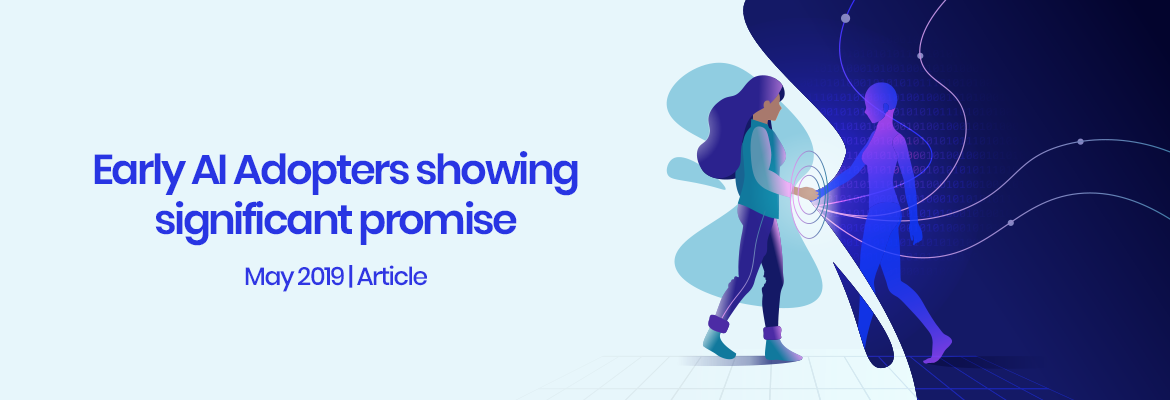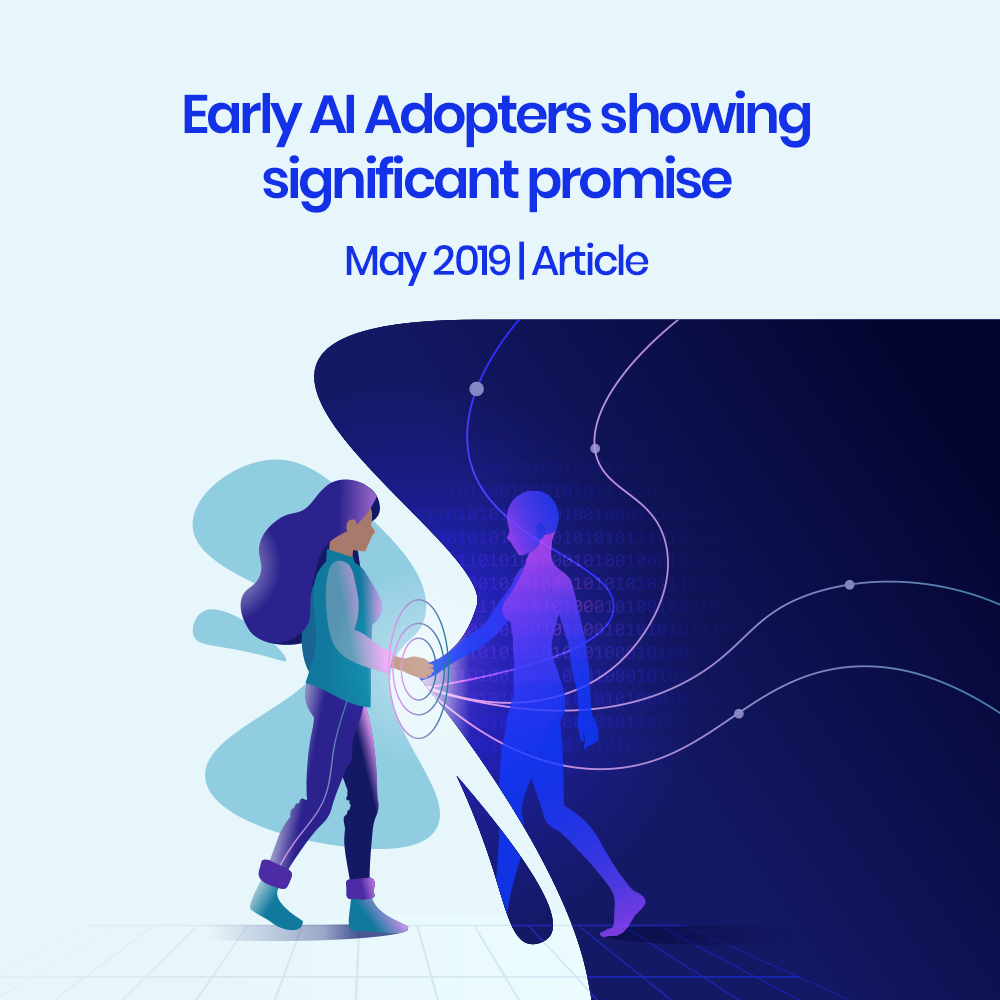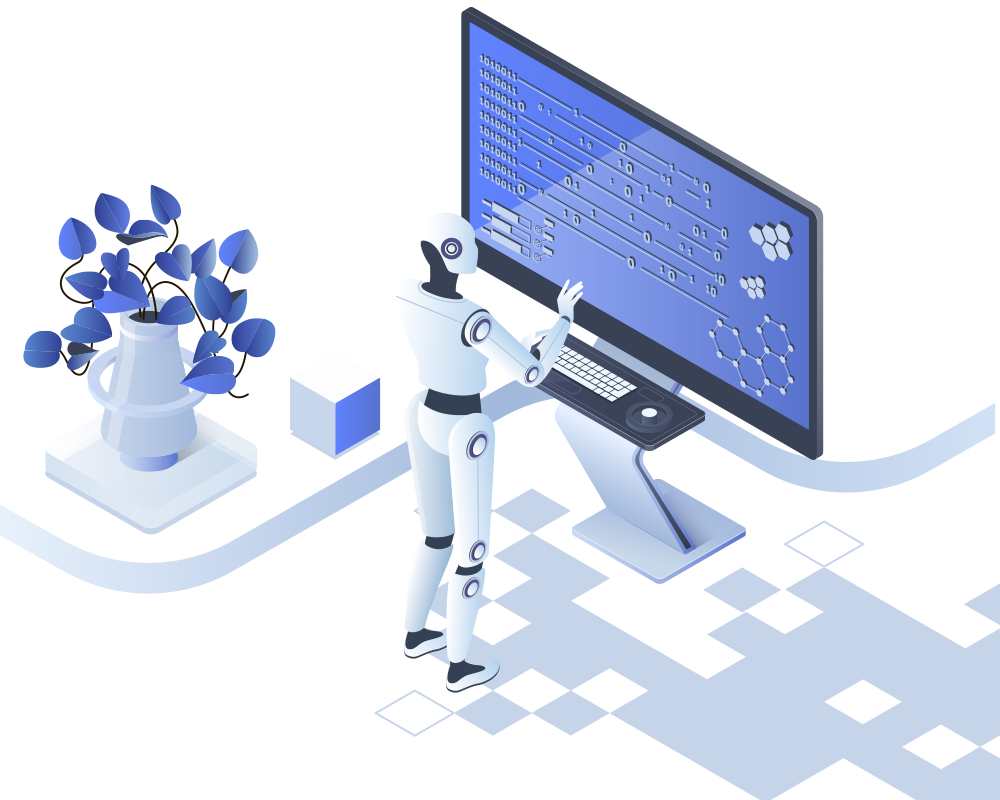

The very word Artificial Intelligence (AI) often wanders the minds of most people towards terminator-like robots and scary machines. Maybe it is what Hollywood and large tech outfits have portrayed it to be to instill scare amongst the masses. The reality is that what hardware is to software, AI is to robots. And while many service-related industries may not find the proper use cases for robots (yet), there are clear and (proven) benefits of running AL enabled intelligent software systems to amplify their businesses.
AI as a phenomenon is fast becoming democratized and commercialized. As most organizations and industries peddle with the right use cases, the Google, Amazon, Facebook types have solid lead, simply because they possess abundant resources (hardware, software, liquidity, data) needed to run effective models and do widespread experiments. Non-tech industries as a whole are also plugging away slowly as best as they can. Insurance is benefiting from the automation of manual underwriting processes, providing faster and better customer service and predicting risk. Retailers now understand their shopper preferences and consumer behavior better and health systems are starting to predict the likelihood of patient readmissions and ways to augment diagnoses and treatment plans. All good and positive stuff with a lot more to happen in the coming years.
 What’s needed to understand is why has AI all of a sudden become a player in the business domains and where was it all along? Well, what’s been missing since AI’s inception in 1959 (yes, it’s been around that long) is the computing power (available in abundance today through cloud), the graphic processing units (GPUs), the availability of data in ungodly amounts, the growth of the data scientist profession (that can make some sense of the madness) and the development of increasingly sophisticated algorithms (led by folks upping their mathematical and analytical skills) to start playing around with the art of the possible. While a lot of this sounds cool already, it’s just the beginning of the ride that will pave way for intelligent algorithms to reshape innovation processes, R&D and many other areas that will have to come together to make things easier, better, cheaper, faster. For now, AI has just started to deliver real-life business benefits and it is not looking back anytime soon.
What’s needed to understand is why has AI all of a sudden become a player in the business domains and where was it all along? Well, what’s been missing since AI’s inception in 1959 (yes, it’s been around that long) is the computing power (available in abundance today through cloud), the graphic processing units (GPUs), the availability of data in ungodly amounts, the growth of the data scientist profession (that can make some sense of the madness) and the development of increasingly sophisticated algorithms (led by folks upping their mathematical and analytical skills) to start playing around with the art of the possible. While a lot of this sounds cool already, it’s just the beginning of the ride that will pave way for intelligent algorithms to reshape innovation processes, R&D and many other areas that will have to come together to make things easier, better, cheaper, faster. For now, AI has just started to deliver real-life business benefits and it is not looking back anytime soon.
According to a recent Mckinsey survey of 3,031 business executives across 7 western countries, 71% claim to be extensive AI adopters with a positive revenue impact of 10% plus. According to Statista; advertising, finance, healthcare, consumer, and aerospace are the sectors leading in AI adoption and the AI market itself is projected to grow to almost $60 billion in the next 7 years. Our thought is that it will be way more than that.
Can AI be implemented by just about anyone?
The adoption of AI is part of a continuum of today’s business needs and is the latest stage of an almost mandatory investment (beyond core technologies) that every futuristic business should be making in its architecture. Some prerequisites to a winning strategy include clarity of the direction the business wishes to head in (in case AI models don’t agree with it) and the readiness of the organization from a digital capabilities perspective to deploy critical AI tools. These include core digital technologies (cloud computing, mobile, and the web) and the advanced ones (big data and advanced analytics) that all play a role in AI adoption (30 percent more likely when the two groups of technologies are combined and synergies are established). Data itself is key as the volume and types of data that is needed for a typical AI initiative to succeed can be a challenging task in itself. Done right, this can skyrocket the business into new areas of success, growth and profitability never experienced before.
Adopt AI; The TransformX way
At TransformX, we are obsessed with creating a digitally enabled future where Artificial Intelligence can augment human abilities allowing us to grow beyond our current limits of efficiency and productivity. However, to succeed in incorporating AI into the thinking of the business, one has to consider many factors. For such initiatives, we recommend that our clients bring an open state of mind to defining digital. ‘Digital’ is far more than technology, a process or a mission statement; it is a way of doing things, a state of mind, a belief system. Elements of our two signature offerings Organizational Transformation and Employee Enablement are combined to run Digital Maturity Assessments and Digital Acumen Assessments that provide a baseline of where things stand on the organization and the employee side and identifies key areas that need to be addressed from a strategy, process, technology or a skill-building level across the board. These insights are then used to create bespoke Digital Transformation Roadmaps and Digital Learning Journeys to set our clients on a path of growth, profitability and the exploration of new digital/data-enabled business models and revenue streams. We look forward to partnering with you on your next culturally infused digital transformation initiative to take you to an envisioned state of Digital Nirvana.
The very word Artificial Intelligence (AI) often wanders the minds of most people towards terminator-like robots and scary machines. Maybe it is what Hollywood and large tech outfits have portrayed it to be to instill scare amongst the masses. The reality is that what hardware is to software, AI is to robots. And while many service-related industries may not find the proper use cases for robots (yet), there are clear and (proven) benefits of running AL enabled intelligent software systems to amplify their businesses.
AI as a phenomenon is fast becoming democratized and commercialized. As most organizations and industries peddle with the right use cases, the Google, Amazon, Facebook types have solid lead, simply because they possess abundant resources (hardware, software, liquidity, data) needed to run effective models and do widespread experiments. Non-tech industries as a whole are also plugging away slowly as best as they can. Insurance is benefiting from the automation of manual underwriting processes, providing faster and better customer service and predicting risk. Retailers now understand their shopper preferences and consumer behavior better and health systems are starting to predict the likelihood of patient readmissions and ways to augment diagnoses and treatment plans. All good and positive stuff with a lot more to happen in the coming years.
What’s needed to understand is why has AI all of a sudden become a player in the business domains and where was it all along? Well, what’s been missing since AI’s inception in 1959 (yes, it’s been around that long) is the computing power (available in abundance today through cloud), the graphic processing units (GPUs), the availability of data in ungodly amounts, the growth of the data scientist profession (that can make some sense of the madness) and the development of increasingly sophisticated algorithms (led by folks upping their mathematical and analytical skills) to start playing around with the art of the possible. While a lot of this sounds cool already, it’s just the beginning of the ride that will pave way for intelligent algorithms to reshape innovation processes, R&D and many other areas that will have to come together to make things easier, better, cheaper, faster. For now, AI has just started to deliver real-life business benefits and it is not looking back anytime soon.
According to a recent Mckinsey survey of 3,031 business executives across 7 western countries, 71% claim to be extensive AI adopters with a positive revenue impact of 10% plus. According to Statista; advertising, finance, healthcare, consumer, and aerospace are the sectors leading in AI adoption and the AI market itself is projected to grow to almost $60 billion in the next 7 years. Our thought is that it will be way more than that.
Can AI be implemented by just about anyone?
The adoption of AI is part of a continuum of today’s business needs and is the latest stage of an almost mandatory investment (beyond core technologies) that every futuristic business should be making in its architecture. Some prerequisites to a winning strategy include clarity of the direction the business wishes to head in (in case AI models don’t agree with it) and the readiness of the organization from a digital capabilities perspective to deploy critical AI tools. These include core digital technologies (cloud computing, mobile, and the web) and the advanced ones (big data and advanced analytics) that all play a role in AI adoption (30 percent more likely when the two groups of technologies are combined and synergies are established). Data itself is key as the volume and types of data that is needed for a typical AI initiative to succeed can be a challenging task in itself. Done right, this can skyrocket the business into new areas of success, growth and profitability never experienced before.
Adopt AI; The TransformX way
At TransformX, we are obsessed with creating a digitally enabled future where Artificial Intelligence can augment human abilities allowing us to grow beyond our current limits of efficiency and productivity. However, to succeed in incorporating AI into the thinking of the business, one has to consider many factors. For such initiatives, we recommend that our clients bring an open state of mind to defining digital. ‘Digital’ is far more than technology, a process or a mission statement; it is a way of doing things, a state of mind, a belief system. Elements of our two signature offerings Organizational Transformation and Employee Enablement are combined to run Digital Maturity Assessments and Digital Acumen Assessments that provide a baseline of where things stand on the organization and the employee side and identifies key areas that need to be addressed from a strategy, process, technology or a skill-building level across the board. These insights are then used to create bespoke Digital Transformation Roadmaps and Digital Learning Journeys to set our clients on a path of growth, profitability and the exploration of new digital/data-enabled business models and revenue streams. We look forward to partnering with you on your next culturally infused digital transformation initiative to take you to an envisioned state of Digital Nirvana.




